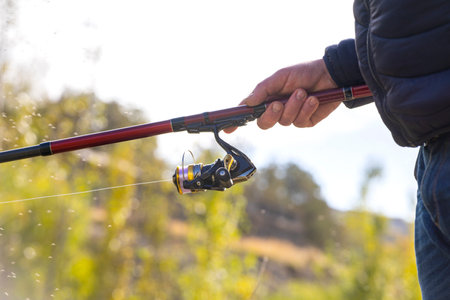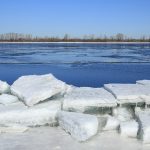1. Understanding the Ice Fishing Season
Before you bundle up and head out onto a frozen lake, it’s important to understand when and where ice fishing is most popular across the U.S. Ice fishing seasons vary greatly depending on the regions climate and local regulations. Knowing these details can help you plan safe and successful trips.
When Does Ice Fishing Season Start?
In general, ice fishing season in the United States begins when lakes freeze over with at least 4 inches of solid, clear ice — strong enough to support foot traffic. This typically happens between late November and early January, depending on the region. Northern states like Minnesota, Wisconsin, Michigan, North Dakota, and Maine often see earlier and longer seasons due to consistently colder temperatures.
Typical Ice Formation Timeline by Region:
| Region | Approximate Start | Approximate End |
|---|---|---|
| Northern Midwest (MN, WI, MI) | Late November | Early March |
| Northeast (ME, VT, NY) | Mid-December | Mid-March |
| Northern Plains (ND, SD) | Late November | Mid-March |
| Rocky Mountains (MT, CO) | Mid-December | Early March |
| Pacific Northwest (ID, WA) | Late December | Late February |
The Role of Climate and Weather Conditions
The safety and duration of ice fishing season depend heavily on weather patterns. Colder winters mean thicker ice and longer seasons, while warm spells or rain can quickly make conditions dangerous. Always check local ice reports before heading out.
The Importance of State Regulations
Apart from nature’s timing, each state has its own laws that govern when you can fish through the ice. These regulations are put in place to protect fish populations and ensure public safety. Some common rules include:
- Seasonal closures: Certain lakes may have restricted access during spawning periods.
- Bait restrictions: Some areas limit the use of live bait to prevent invasive species.
- Shelter rules: In many states, any ice shelter left overnight must be labeled with your contact information.
Helpful Tip:
You can find specific seasonal dates and laws by visiting your state’s Department of Natural Resources (DNR) website. Always double-check before planning your trip!
Icy adventures await — but knowing the right time and place is key to getting started safely and legally.
2. Essential Gear and Tackle for Ice Fishing
If youre new to ice fishing, having the right gear can make all the difference between a frustrating day on the ice and a fun, successful one. Heres a simple breakdown of the essential equipment every beginner should have before heading out onto the frozen lake.
Ice Augers
An ice auger is your first must-have tool. Its used to drill holes through the ice so you can fish. There are manual hand augers, gas-powered augers, and electric models. For beginners, a hand auger is usually enough if the ice isnt too thick (under 12 inches).
Types of Ice Augers
| Type | Power Source | Best For |
|---|---|---|
| Hand Auger | Manual | Shallow ice, budget-friendly option |
| Gas Auger | Gasoline | Thick ice, faster drilling |
| Electric Auger | Battery-powered | Quiet operation, eco-friendly |
Ice Shelters
An ice shelter protects you from wind and freezing temperatures. They range from lightweight pop-up tents to heavy-duty flip-over shelters with built-in sleds. Beginners often prefer pop-up shelters because they’re easy to set up and carry.
Rods and Reels
Ice fishing rods are shorter than regular rods, usually around 24 to 36 inches long. Theyre designed for vertical jigging through a hole in the ice. Pair your rod with a spinning reel that can handle cold conditions.
Recommended Rod and Reel Combos for Beginners
| Rod Type | Reel Type | Ideal Use |
|---|---|---|
| Ultralight Rod | Straight-line or spinning reel | Panfish like bluegill or crappie |
| Medium Rod | Spinning reel | Larger fish like walleye or trout |
Tackle Essentials
Your tackle box for ice fishing should include a variety of jigs, spoons, live bait like waxworms or minnows, and bobbers or spring bobbers for bite detection. Bright colors often work well in low-light under-ice conditions.
Basic Tackle Checklist:
- Tungsten jigs in assorted sizes and colors
- Spoons for deeper water fishing
- Bait containers for live bait storage
- Bobbers or spring bobbers to detect subtle bites
- Tackle box to keep everything organized and dry
Clothing & Safety Gear
Dressing in layers is key when youre spending hours on the ice. Start with moisture-wicking base layers, add insulating layers like fleece or down, and top it off with a waterproof outer shell. Don’t forget insulated boots, gloves, and a warm hat. Always bring safety picks and wear ice cleats to prevent slipping.
Safety Must-Haves:
- Ice cleats for traction on slippery surfaces
- Icepicks (worn around neck) in case you fall through the ice
- A small first aid kit in your gear bag
- A floatation suit or life vest for added safety on early or late-season ice
Having these essentials will not only make your first few trips more comfortable but also help you focus on enjoying the experience of catching fish through the ice.

3. Safety First on the Ice
Before you drop your first line through the ice, its absolutely essential to put safety at the top of your list. Ice fishing can be a blast, but it comes with its own unique set of risks. Being prepared and knowing what to look out for will help ensure that your trip is not only fun but also safe.
Check Ice Thickness
Not all ice is created equal. The thickness and quality of the ice can vary based on weather, location, and time of year. Heres a simple guide to safe ice thickness:
| Ice Thickness | Activity |
|---|---|
| 4 inches | Safe for walking and ice fishing |
| 5-7 inches | Safe for snowmobiles or ATVs |
| 8-12 inches | Safe for small cars or light trucks |
| 12-15+ inches | Safe for medium trucks |
Always use an ice auger or spud bar to test the thickness as you move. Avoid areas with cracks, pressure ridges, or running water nearby, as these can indicate weaker ice.
Dress for Extreme Cold
The cold on the ice hits differently—wind, moisture, and sitting still can make even a mild day feel freezing. Layering is key. Start with a moisture-wicking base layer, add an insulating middle layer like fleece or wool, and finish with a waterproof and windproof outer shell. Don’t forget insulated boots, thick socks, gloves, a hat, and even face protection if it’s windy.
Carry Essential Safety Gear
No matter how experienced you are, always carry basic safety equipment when heading out onto the ice:
- Ice Picks: These handheld tools can help you pull yourself out if you fall through the ice.
- Throw Rope: A floating rope can be used to help rescue someone from a safe distance.
- Floatation Device: Wear a floatation suit or bring along a life vest just in case.
- Cleats or Ice Grippers: Prevent slipping by adding traction to your boots.
- A Buddy System: Never fish alone—bring a friend or let someone know your plans.
The Buddy System Saves Lives
If theres one rule seasoned anglers swear by, its “never fish alone.” Having someone with you means theres help nearby if anything goes wrong. If you must go solo, make sure someone knows exactly where youll be and when you plan to return.
A Few More Quick Tips:
- Avoid alcohol—it impairs judgment and increases the risk of hypothermia.
- Keeps phones in waterproof cases and fully charged.
- If in doubt about ice conditions, don’t risk it—come back another day.
Your safety is more important than any fish you could catch. Take these precautions seriously so you can enjoy every minute on the ice without worry.
4. Choosing the Right Location and Target Species
Picking the perfect ice fishing spot and knowing which fish to go after can make or break your trip. Whether youre heading out for your first time or just looking to up your game, understanding where to fish and what species are active under the ice is key.
Finding the Best Ice Fishing Spots
Not all frozen lakes are created equal when it comes to ice fishing. Some lakes are known hotspots for certain fish, while others might be better suited for a peaceful day on the ice with less action. Heres what to look for when choosing a location:
- Local Knowledge: Talk to local bait shops or check online forums for recent reports. Locals usually know where the fish are biting.
- Lake Structure: Fish tend to gather around underwater structures like drop-offs, weed beds, and submerged points. Use a lake map or sonar device to find these areas.
- Accessibility and Safety: Make sure the lake has safe ice (at least 4 inches thick for walking) and easy access from roads or parking lots.
Popular Ice Fishing Species
Certain fish thrive in cold water and remain active throughout winter, making them popular targets for ice anglers. Here are some of the most commonly caught species through the ice:
| Species | Description | Best Baits | Typical Depths |
|---|---|---|---|
| Walleye | A favorite among serious anglers, known for its tasty fillets and light bite. | Jigging spoons, minnows, rattle baits | 15–30 feet near drop-offs or points |
| Yellow Perch | Great for beginners; they school in large numbers and are fun to catch. | Waxworms, small jigs, spikes | 10–25 feet near weed edges or flats |
| Panfish (Bluegill, Crappie) | Perfect for family outings; plentiful and active throughout winter. | Tungsten jigs, plastics, maggots | 5–20 feet depending on species and time of day |
Tips for Matching Species to Locations
- Northern Lakes: Often hold walleye and jumbo perch. Look for deeper basins and mid-lake humps.
- Weedy Shallow Lakes: These are prime spots for bluegill and crappie. Focus on areas with remaining green weeds under the ice.
- Lakes with Clear Water: Fish may be more skittish here. Try lighter lines and natural baits during daylight hours.
A Quick Tip:
If youre unsure where to start, try fishing near other anglers—just be respectful of their space. Chances are theyre there because theyve had success before!
The more you learn about your target species and their habits during winter, the better your chances of bringing home a good catch. Each lake has its own personality, so don’t be afraid to explore new spots until you find your sweet spot under the ice.
5. Techniques for Successful Ice Fishing
Once youve got your gear and safety basics down, its time to focus on how to actually catch fish under the ice. Two of the most popular and effective methods in American ice fishing are jigging and tip-up fishing. Each has its own advantages depending on what species youre targeting and your personal fishing style.
Jigging
Jigging is an active fishing method where you use a small rod to drop a baited hook into the water and then move it up and down to attract fish. This technique works well for species like perch, walleye, and crappie. The key is to create a motion that mimics injured prey—something irresistible to hungry fish.
Tips for Jigging Success:
- Use small jigs with bright colors or glow-in-the-dark options for low-light conditions.
- Vary your jigging speed until you find what the fish respond to.
- Add live bait like waxworms or minnows for extra appeal.
Tip-Up Fishing
Tip-ups are great if you want to fish multiple holes at once or take a more relaxed approach. A tip-up is a device placed over the hole with a flag that “tips up” when a fish bites. This lets you monitor several lines without holding a rod all day.
Why Use Tip-Ups?
- Perfect for catching larger species like northern pike and lake trout.
- You can cover more area by setting up several tip-ups at different depths.
- Easy to use for beginners or those fishing in groups.
Bait Selection
The type of bait you choose can make or break your ice fishing day. Different fish prefer different baits, and even the same species may change preferences based on temperature or time of year.
| Fish Species | Recommended Bait |
|---|---|
| Panfish (Bluegill, Crappie) | Waxworms, mealworms, small jigs with plastic grubs |
| Walleye | Live minnows, jigging spoons tipped with minnow heads |
| Northern Pike | Large live minnows or shiners on tip-ups |
| Lake Trout | Tubes, spoons, or dead bait like smelt |
The Best Time of Day to Fish
Timing can greatly affect your success on the ice. Most anglers agree that early morning (around sunrise) and late afternoon (just before sunset) are prime times because fish tend to feed more actively during these hours. That said, certain species like lake trout might bite throughout the day if conditions are right.
Pro Tip:
If youre not getting bites after 30–60 minutes, try changing your depth or location. Fish move around under the ice just like they do in open water.
By understanding these techniques and adjusting based on bait, timing, and target species, youll improve your chances of landing some great catches during your next ice fishing adventure!


